#slavic customs
Text






slavic christmas time
1 note
·
View note
Text
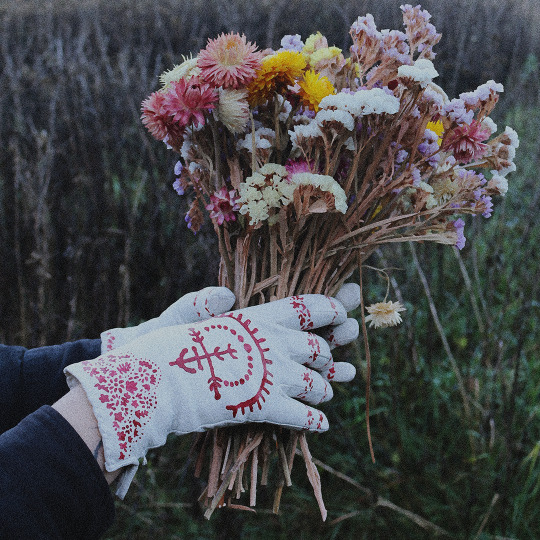
Hand painted second-hand leather gloves - inspired by old Slavic embroidery and traditional Balkan tattoos
#custom clothing#slavic#slavic culture#slavic folklore#slavic art#slavic witch#slavic paganism#pagan art
11K notes
·
View notes
Text
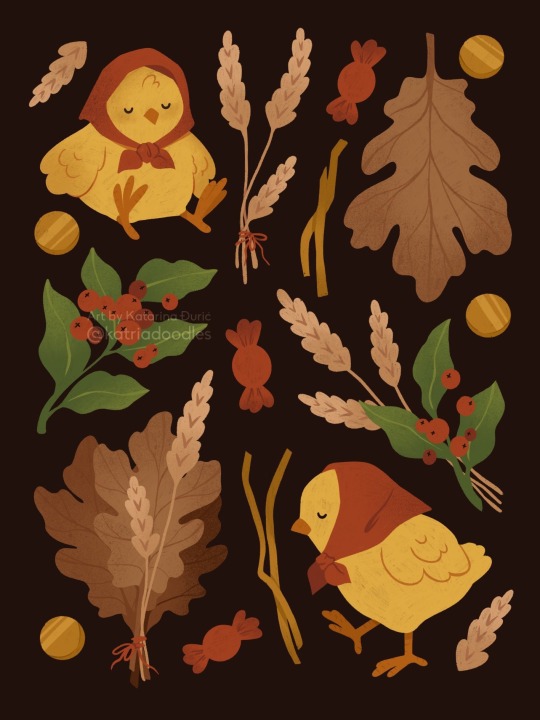
wishing happy holidays to everyone who’s celebrating and equally cozy and snuggly time to those who aren’t 🐥
#I’m not religious but my family is Orthodox Christian so we celebrate Christmas on Jan 7th!#this illo represents one of my favorite customs ever#my art#artists on tumblr#slavic culture#slavic art#digital art#cute art#artists of tumblr#eastern europe
2K notes
·
View notes
Text
Feliks wearing a crop top I saw in a store recently doodle :P (Tolys bought it for him)


Plus another sneak peak of that one high school lietpol drawing since I’m still not done with it lmao
#aph poland#hws hetalia#hetalia fanart#hetalia fandom#artists on tumblr#fanart#poland hetalia#feliks łukasiewicz#doodle#shitpost#I got yelled at by a customer today at work and I was completely zoned out so it all flew over my head#not nice#lietpol#slavic#hetalia memes#aph#has#hws poland#wip#art wip#I am sososooo tired holy shit#my favourite kind of ogórki kiszone are the ones that are like not too salty and those that are 50% sweet and 50% sour#polishcore#again I put like zero effort into this#I think I’m gonna fall asleep in like five seconds#i actually canon him as transmasc btw bc yeah lol
140 notes
·
View notes
Text




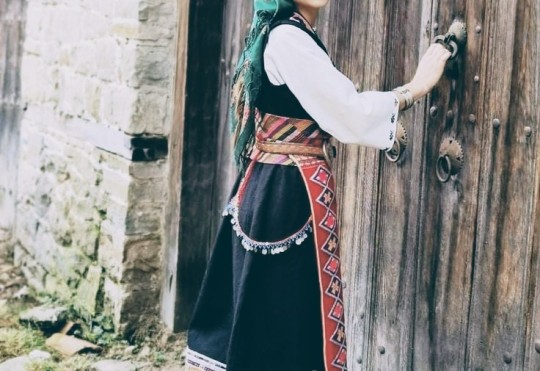
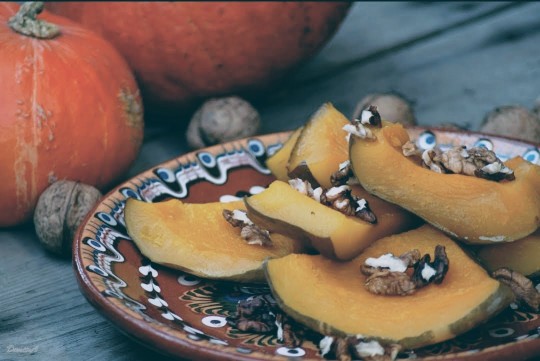


October 26th is Dimìtrovden/Mitrovden (Димитровден), or the Orthodox feast day of St. Demetrius of Thessaloniki. (Bulgarian: Свети Димитър Солунски) He is a 3rd-4th century Christian saint and great martyr (великомъченик) from the city of Thessaloniki in Greece, of which he is the patron saint.
Hagiographies refer to St. Demetrius as a young man of a senatorial family, who became proconsul and was tasked with persecuting Christians in the at the time still pagan Roman Empire. However, being himself Christian, he instead protected them, for which the emperor had him jailed. He was later speared to death as punishment for the defeat of the gladiator Lyaeus at the hands of Demetrius' disciple, Nestor. This marked the beginning of his veneration by Christians in the area, which grew in the following centuries, as he was said to guard the city against raiders.
Albeit not one originally, during the Middle Ages St. Demetrius came to be revered as a warrior saint, and iconography portrays him riding on a red horse, running a spear through various enemies — often Lyaeus, but also whoever was locally perceived as an enemy. In Greek icons, this is sometimes the Bulgarian tsar Kaloyan, while in Bulgarian ones — the Byzantine emperor Basil II The Bulgarslayer, or later on, a Turk. St. Demetrius is also associated with the founding of the Second Bulgarian Tsardom, specifically the uprising of the brothers Petăr and Asen, which broke out on Oct. 26th, 1185. The St. Demetrius church in Veliko Tărnovo (pictured above) was built in commemoration the event, and served as a coronation site of Asen dynasty tsars, who claimed him as their patron.
Traditionally, Dimitrovden marks the end of the seasonal transition from fall to winter, a period which begins on Oct. 14th with Petkovden. Bulgarian folk mythology casts the saints George and Demetrius in the role of twin brothers, whose respective holidays split the year into its warm and cold halves. The latter, elder of the two, ushers in the cold and darkness, as he rides in on his red horse and the winter's first snowflakes sprinkle down onto the earth from his beard. As St. George's opposite and counterpart, he takes on the qualities of a chthonic deity, and thus has connotations to death and the Beyond — under his patronage the so-called Dimitrovska Zadushnica takes place on the Saturday prior to Dimitrovden, one of several such holidays where food is given out in honor of deceased ancestors. Perhaps this is also why, in addition to St. George, folk imagination places him as a brother to Archangel Michael and nephew to St. Paraskeva/Petka.
Dimitrovden is the true end to the year's agrarian cycle — the harvest now over, it's time to put the farm tools away, make sure the animals have shelter and firewood is stocked up. It's also when farmhands and other labourers' contracts expire and they get rehired for the year ahead, which is why the day is also known as Razpust (Разпуст). As with other big holidays, a community-wide celebratory feast is held, and the customary ritual meal (or kurban) is mutton. The biggest ram is chosen, a pair of gold-painted apples are placed onto its horns and those present bow before it, after which it's slaughtered and cooked, and receives a priest's blessing before being served. Festivities are accompanied by music and horo (group dancing), which again has an intended matchmaking function. Namesakes of the saint celebrate the occasion, too — but they're traditionally served a chicken or rooster dish, according to gender. Other foods for Dimitrovden include corn, seasonal fruit and derived dishes, such as apple pita, pestil (a type of plum dessert), rachel (pumpkin syrup), etc.
Another activity which traditionally ends on Dimitrovden is construction work — a new house is supposed to have been completed by then, and the homeowners celebrate by throwing their own feast with a kurban, and inviting friends and relatives to witness the house being blessed by the master mason and the priest. The feast day has therefore been adopted as a career holiday of builders and masons.
The day's connection to the mysterious and otherworldly has inspired various beliefs and rituals of prognostic or divinatory nature, and anything from the weather and moon phases, to the behaviour of farm animals is observed carefully and used to make future predictions. Characteristic is the custom, known as polazvane (полазване), wherein members of the household make note of the first person to visit them, to physically cross the threshold into their home, and interpret them as a portent of things to come. Also, according to old treasure hunting legends, Dimitrovden is when "the sky opens" and buried gold emits a blue-ish flame just above ground.
Dimitrovden is part of the group of holidays, based around the idea of transition and liminality; between fall and winter, between the world of the living and of the dead. The Christian and pre-Christian symbolism intertwine, the martyr death of the saint mirrors the "death" of nature as the earth is covered in snow and daytime engulfed by darkness. And crucially — for a people whose perception of time follows nature's cycles — the coming of winter brings not only a period of calm and rest, but the promise of spring and renewal.
#Bulgaria#Slavic#Balkan#Eastern Europe#Orthodox#folklore#mythology#customs#Dimitrovden#here you go bulgarian halloween pt.2#I am again sorry it's several days later but it took a while to write ok
2K notes
·
View notes
Text

tales from the sportsbook! context under the break
this person was a regular, in that he was barely of age but never had ID and kept coming in with minors. a sportsbook is a casino. you are not allowed to do that. i kicked him out whenever he wasn’t alone.
“kur ne me boli” is basically our “i do not give a singular fuck”. but you are also directly calling to the existence of your penis when you say it.
so i was kicking him out, he’s making all these excuses, as they do… and he looks super surprised when i say this and looks at my crotch?? like he makes a big dramatic show of looking at my dick and then being amused about it. like damn, what is your problem.
#art#ftm#trans#lgbt#oc art#trans man#transgender#comic#sportsbook stories#kladilnica#slavic#nekh draws#nekh is trans#jobs are weird#customer service is weird#balkans#kladilnici are also where you find the absolute worst our countries have to offer!!
22 notes
·
View notes
Text
A Year in Vintage Czechoslovakian Embroidery to Date:
Christmas:

Hromnice/Candlemas:

Spring Equinox/Easter:

May Day/Walpurgis Night/pálení čarodějnic:

#devotional embroidery#cross stitch#folk embroidery#embroidery#wheel of the year#calendar customs#Czech#Slovakian#Czechia#Slovakia#Western Slavic#altar cloth#ritual embroidery
204 notes
·
View notes
Text

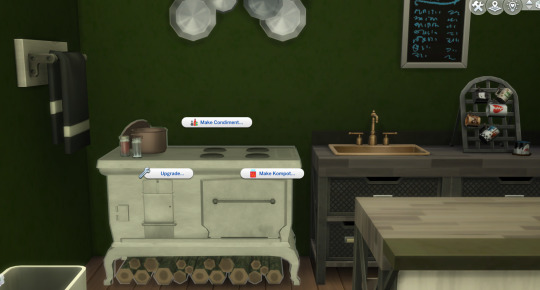
Kompot Processing Stove
I started this project back in April ... I'm beyond happy that I'm finally ready to share it with you guys!
BASE GAME COMPATIBLE
Description:
Kompot Processing Stove is a large appliance that can be used to make specific types of preserves - Kompot and Condiments (Mostly Easter Europen/Balkan traditional condiments).
**Kompot or compote is a non-alcoholic sweet beverage that may be served hot or cold, depending on tradition and season. It is obtained by cooking fruit in a large volume of water, often together with sugar as additional sweetener. Kompot is part of the culinary cultures of many countries in Central, Eastern, Southern Europe and Middle East.
It can be found in buy mode under Stoves. It costs 1200$.
When you press on the object you'll see 2 options to 'Make Kompot' or to 'Make Condiments', each will open a selection menu and you can choose from a variety of preserves.
You need cooking skill to unlock new recipes.
At L1 you can make 8 different types of Kompot, at L5 are unlock seven new kompots, and at L7 the condiments are unlocked!
You can make in total 15 kompots and 10 condiments.
Each process creates a box with the particular preserve, the box can be sold for profit, enlisted on plopsy or it can be opened. One box contains 6 jars.
All jars can be sold for profit or enlisted on plopsy. The food doesn't spoil.
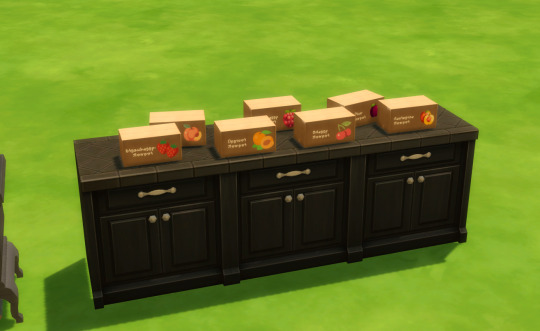

Kompot jars can be opened and you will receive 4 bowls of kompot. It's better to keep them stored in the fridge.
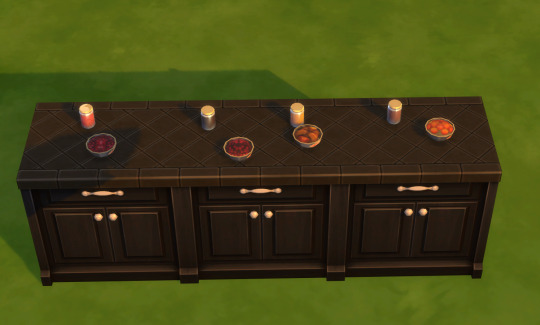
Condiments jars - your Sim can eat straight from the jar, or open the jar. Once opened, the jar gives 6 plates with condiments on toasted bread. Keep them stored in the fridge.

There are a few buffs when your Sim consume the preserves and when your Sim works on the stove.
There are a few free spots on the stove that you can decorate if you'd like. Each preserve has optional ingredients, if you have the needed ingredients it's free, otherwise, you can just pay.
Optional Ingredients:
Icemunmun's: Apricot, Cranberry, Mango, Peach, Plum
BrazenLotus': Celery, Red Bell Pepper
PiedPiper's: Nectarine
Indoor Harvestable Cornichon
Indoor Harvestable Red Chili Pepper
Garlic (Vampires GP)
Bell Pepper (Seasons EP)
Raspberry, Blueberry (Cottage Living EP)
Srsly's Cooking Overhaul
I want to say a huge THANK YOU to Mirai, who helped me tremendously, to understand better the code and fix the enormous amount of LE errors! Without her help, I'm not sure when and if this mod would have ever been possible!
P.S. This mod was inspired by my home region, and I wanted to implement the Slavic culture into the Sims. However, if you want more varied preserves, I can recommend you to try Icemunmun's Canning Station which contains numerous types of preserves, if you didn't try it yet!
DOWNLOAD (Early Access)
Public Release on 5th of November
@maxismatchccworld @sssvitlanz
#the sims 4 custom content#ts4 custom content#ts4 maxis match#s4 download#ts4 download#s4 maxis match#s4 custom content#s4 mm cc#sims 4 download#ts4 maxis mix#ts4 mm cc#ts4 cc#ts4 cottage living#ts4 custom food#ts4 custom drinks#ts4 gameplay#ts4 kompot processing#ts4 slavic content#ts4 custom objects#s4 custom food#s4 cc download#s4 custom recipes#s4 custom drink#s4 custom object#ts4 custom recipes
222 notes
·
View notes
Text
Training polyglossia and making myself insane by tabbing back and forth between a lecture in Polish and an audiobook in Russian. I'm a crucible for interslavic franken-surzhyks heretofore unknown to science
13 notes
·
View notes
Text




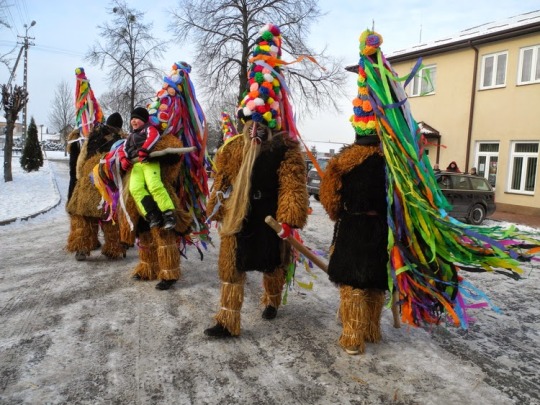
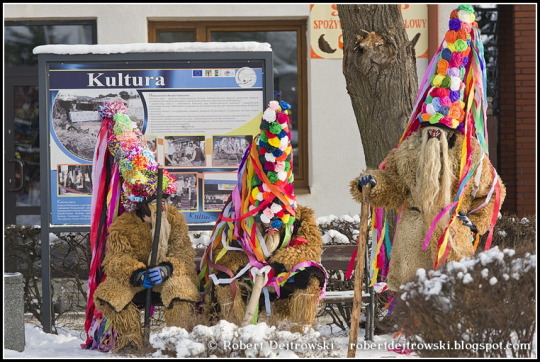
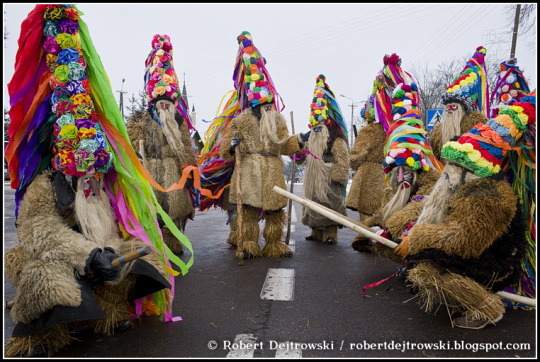

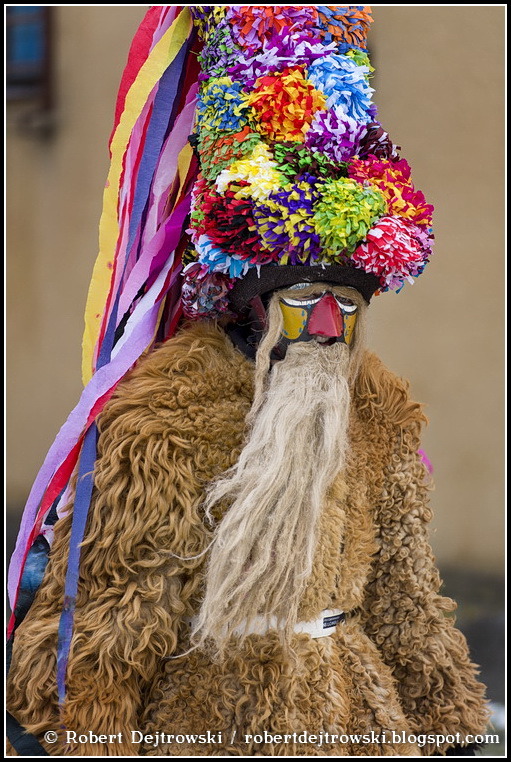

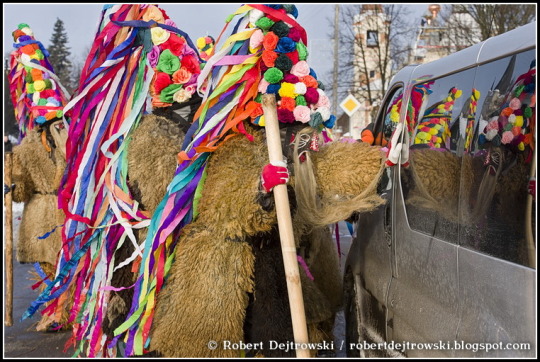


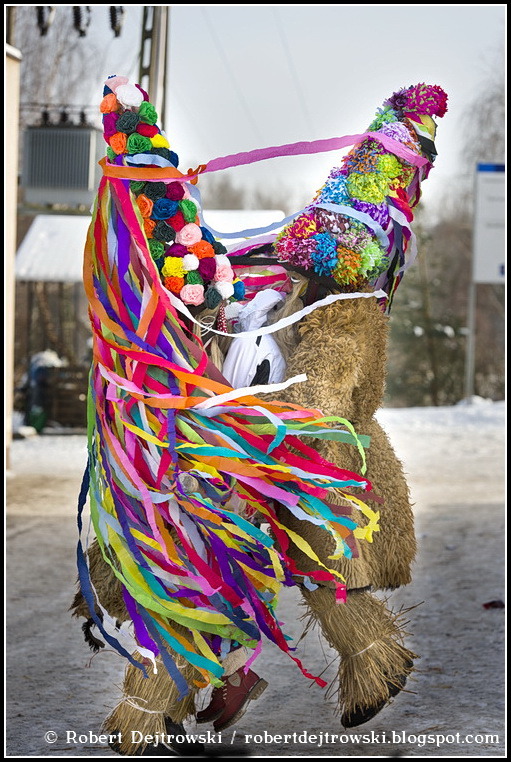

brodacze (bearded ones) from Sławatycze
#masks#slavic folklore#poland#caroling#folklore#carolers#christmas traditions#christmas#folk tradition#koledari#folk customs#eastern europe#new year#ethnography#christmas customs#my upl
19 notes
·
View notes
Text

Hand painted second-hand leather gloves - inspired by old Slavic embroidery and traditional Balkan tattoos
3K notes
·
View notes
Text
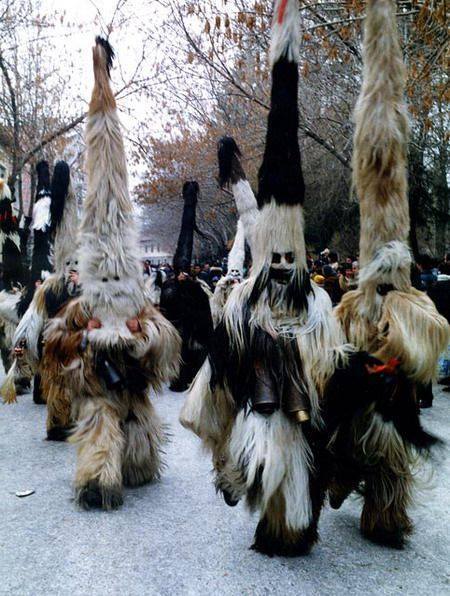
"Slavic Winter rituals - The nuptials of the North Star & Winter Solstice imparted mythological elements to costumes, head dresses and masks. In Bulgaria, the 'kukeri', of prehistoric origin, is a ritual where men appear fierce and often with belts ringing with cow bells and is done to scare away evil spirits. The roles for men were carefully designed to 'protect' and to make fecund the Moist Mother Earth- with honor, respect, and love."
- Danica Anderson, PhD
#Slavic Winter rituals#North Star#Winter Solstice#Bulgaria#kukeri#prehistoric#protection#Moist Mother Earth#honor#respect#love#ancient ways#sacred ways#Ancestors Alive!#What is Remembered Lives#Memory & Spirit of Place#Danica Anderson#customs#traditions#folkways#culture#Europe
83 notes
·
View notes
Text
Yes, worship of the gods is an important part of slavic paganism, but connection to nature, belief in mythical creatures, folklore and traditions, connecting to the community, they are all the core of slavic paganism.
#digital temple#pagan#paganism#slavic#slav#slavic folklore#slavic mythology#slavic pagan#slavic paganism#folklore#traditions#customs#culture#slavic culture#nature#slavs
4 notes
·
View notes
Text
The Dreamweaver

Wrapped in magic
#ai art#custom blankets#logo design#witchblr#paganblr#slavic paganism#digital illustration#dreamweaver#dreamweaverai#etsyshop#blankets#blanket#ai assisted art#art#artists on tumblr
3 notes
·
View notes
Text
Custom also forbade them to whitewash the walls of the room in which the person died ("in case the soul of the deceased is resting in a crack in the plaster"). The belief in the possible return of the dead was so widespread in the Carpatho-Rusyn homeland that tales on this theme have been retained in all the villages. According to the stories, the late relative most often returned to pick up his or her favorite things, such as a pipe, tobacco, or a musical instrument. These things were usually laid upon the grave in order to prevent any further return of the dead.
Via carpatho-Rusyn.org
This little tidbit pulls at my heartstrings
10 notes
·
View notes
Text
ATTENDING A WEDDING IN SEPTEMBER
#my mom thinks i should buy a new dress which right away makes me want to get something custom made ngl#and i think i already have a dress but christian slavic wedding is saur serious
3 notes
·
View notes